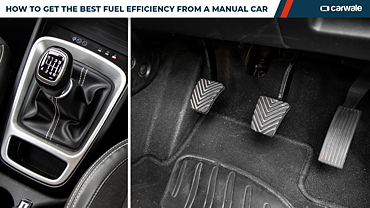
It was 4am and I was lying on the bed, wide awake. I had been trying to grab a few winks for the past few hours before the early flight took me Delhi, but the excitement was too much to handle. This was going to be my first visit to the Buddh International Circuit, the Mecca for motorsports enthusiasts in the country. And as if that wasn’t enough, this was going to be a Nissan event, which meant that there was a high possibility that I would get to drive the mighty GT-R and the 370Z. I turned over to the other side and tried to sleep once again, but inside I knew that it was pointless to try. I’d better get up and get some work done.

A few hours later, Omkar and I met up at the Mumbai airport, and his face showed somewhat similar emotions. Even he seemed to be sleep deprived and thoroughly excited at the same time. The Nissan Carnival was a celebration of the company's 10th year of operation in India that was organised to demonstrate the company’s latest technology and rich heritage. And while Nissan had refused to divulge which cars we would be driving at the event, their promise of a first-hand experience of 'innovation and excitement' had got us both all pumped up. However, it turned out that we weren’t going to be that lucky after all.


My first shock of the day came as soon as we reached the venue in Greater Noida when we realised that the event was going to be conducted right outside the Buddh International Circuit, and not exactly on the race track. Nevertheless, I started scanning the parking lot desperately in search of the GT-R or the 370Z, but with no sign of either of them, it turned out to be a double whammy. With disappointment plastered on our faces, Omkar and I started to walk towards the media centre. On our way though, we caught a glimpse of a cluster of unusual looking cars parked in a distance, and an exciting possibility entered our thoughts, instantly lifting our spirits. It wasn’t going to be just another boring day after all!

At the media centre, we were briefed about Nissan’s success in India by the president of Nissan India, Mr Guillaume Sicard. He took us through the progress of Nissan’s operations in India over the past decade and the company’s plans for the future. As Mr Sicard walked off to a applause, the dais was then taken over by none other than The Gypsy King – Mr Hari Singh, who was going to be our head instructor for the day. As the veteran rally driver started with the run down for the day’s events, our suspicions were confirmed. We were going to drive the Nissan Patrol and the Nissan Leaf!

After the briefing where all journalists were split into four groups, we walked past a graffiti-covered Nissan Sunny towards an autocross track in the parking lot. Here two of our instructors took charge of the Nissan Sunny sedans and pulled off a brilliantly coordinated car stunt show involving synchronised driving though slaloms, J-turns and handbrake turns. From here, we split up according to our groups and headed to our respective ‘zones’.


As we moved towards the parking lot, we could see two huge SUVs gleaming in the sun, beyond a couple of white tents. As we approached these cars, the image of the two SUVs started to clear up and the enormity of the Patrol suddenly hit us. It stood towering besides the Micra and the Leap like a big brother guarding its siblings, and cameras started flashing as everyone tried to capture the magnificence of the Patrol.

These two specific cars had been imported from Dubai and as such, were left-hand-drive models. Discreet can be the perfect word to describe the Patrol. Despite its massive proportions, the smooth lines and the massive chrome grille at the front polish out the SUV's image, removing traces of its rugged nature and capabilities. Inside, you are greeted by a vast expanse of high quality leather and wooden trim, and only the terrain assists system’s dial near the gear knob hints at the Patrol's true potential.

We got inside the Patrol as our instructor, Mr Sunny Sidhu, took the wheel and started briefing us about the off-road track that we were going towards. At cruising speeds, the five-metre long Patrol just moves in an orderly fashion like any heavy tall-boy SUV, though at higher rpms you get a glimpse of the furious nature of the 400 horsepower V8 engine. As soon as Sunny floored the throttle, the cabin was infiltrated with a sweet rumble and I felt a sudden thrust that I had experienced just a few hours earlier in the Airbus A320 as it took off from the Mumbai airport. He then took a sharp left turn and the body roll flung me over to the adjacent seat, making me instinctively pull out and fasten the seat belt. After driving for a few hundred metres, we reached the ‘Off-Road Zone’, which was a purpose built well-beaten off-road track. This track also happens to be the same place where Audi demonstrates the off-road capabilities of the Q-series of SUVs, through its Audi Dynamic drives.

We got a recce of the track with Sunny who demonstrated the lines of the track and the purpose of each of the obstacles. Omkar then took the wheel of a Terrano and thrashed it around in a mellowed down part of the track. After this practice lap of sorts, he got into the driver’s seat of the Patrol and tried to get accustomed to the left-hand-drive car while trying to give it a proper shakedown at the same time. And even as we tackled huge craters, mud and slush, ruts and even a 40 degree ramp, the Hydraulic Body Motion Control system and the excellent four wheel drive system made sure that the Patrol never lost its composure. Though the Patrol tackled all these obstacles without breaking a sweat, I could sense the disappointment in Omkar’s voice as he grumbled about the lack of feedback in the steering wheel. However, with an SUV the size of Patrol, you don’t really expect a lot of driving thrill. Off-roading is the Patrol’s forte and it does it very competently.


From here, we got into an Evalia which took us back to the parking lot of the BIC. The next event in the agenda was an autocross run and the faint aroma of burnt rubber at the track gave an account of the fun that the previous group must have had in the Micra and the Sunny. This zone had two specially laid out autocross tracks – one for the manual cars and one for the CVTs. And while Omkar went through the sharp chicanes, hairpins and the slaloms in the full attack mode in the manual cars, I set out cruising in the CVT Zone of the track, in the Micra and the Sunny. This was my first outing on a tight autocross track, and I was in no mood to make it a memorable one, for all the wrong reasons.

The final experience of the day was a drive of the fully electric Nissan Leaf. The Leaf’s drive was also chalked out around a specially laid out autocross track, though the corners were less dramatic to make it easy for drivers who aren’t used to electric vehicles. The car had already endured several rounds of the track in the hands of other journalists and our batch was the last one to have a go in it.

My previous encounters with electric vehicles included a weekend with the Hero Electric Photon scooter and a five-minute drive in the Mahindra e2o. And while I was expecting the comedic burst of torque that electric vehicles are notorious for, nothing could prepare me for the eerily powerful punch of the Nissan Leaf. This time too we were shown around the track by an instructor before getting a chance to get in the driver’s seat, which in this case too, was on the wrong side. This car had also been imported from Dubai and hence, was a left-hand-drive model.

Driving from the left side of the car felt very uncanny, and the fact that the Leaf’s power delivery is nothing like ICE-powered cars didn’t help matters. The Leaf is a 100 per cent electric hatchback, which unlike the other pure electric vehicles, manages to stand up to other conventional counterparts. It is powered by an 80kW AC electric motor which produces over 250Nm of torque right from zero rpm.

Once you get used to it though, the Leaf’s seamlessness makes it a very fun to drive car. The car’s traction control and ABS system make sure that you don’t overdo things in your excitement, though they did hamper the fun on the autocross track. But then, despite all of its fun-factor and practicality, the low battery alarm reminded us all that the Leaf was, after all, an electric car with a limited range. By the end of my second lap, the car was completely down on power and it had to be sent away into an eight-hour hibernation period to fully charge up its lithium-ion batteries.

Overall, the Nissan Carnival was a fun event which provided me with many of my first experiences and offered a glimpse into the two extreme ends of innovation. The Nissan Leaf represents a revolutionary step in terms of environmental friendly mobility. In less than four years, Nissan has sold over 1.6 lakh units of the Leaf worldwide and these numbers depict an impressive success story. Nissan’s innovations with electric vehicles haven’t been restricted to family hatchbacks. In 2014, the Nissan ZEOD RC hybrid electric race car became the first ever car to complete a lap in the 24 Hours of Le Mans race using electric power only.

The Patrol on the other hand is a petrol-guzzling premium SUV, which is widely regarded as one of the best in its trade. Since it was first introduced over 64 years back, the Patrol has soldiered on through the toughest of the terrains, establishing a cult following for itself in the Middle East. Though the chances of seeing a Leaf on Indian roads are very bleak, Nissan is strongly considering launching the Patrol in the Indian market. And even if the Patrol fails to generate volumes, it will surely help Nissan bolster its premium image in the country. So while the Nissan GT-R and 370Z continue to elude me, the Patrol and the Leaf along with the rest of Nissan’s line-up proved to be equally delightful consolations.






